Practice Test: Mechanical Engineering (ME)- 9 - Mechanical Engineering MCQ
30 Questions MCQ Test - Practice Test: Mechanical Engineering (ME)- 9
Direction: Study the following pie-chart and tables carefully and answer the questions given below.
Total Number of email received by the organization = 90000
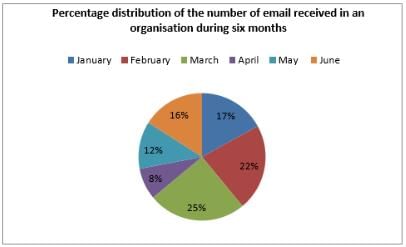
Ratio of Read emails to Unread emails received by the organization

What is the ratio of the number of emails read in January to those unread in the month of April in the organization?
Total Number of email received by the organization = 90000

Ratio of Read emails to Unread emails received by the organization

Direction: Two sentences with one blank in each, followed by five alternatives, are given. Choose that option as the answer which can fill both the blanks of both the sentences.
I. Most of our employees get _____ abroad at some stage
II. The aircraft and its crew were ______ missing.
I. Most of our employees get _____ abroad at some stage
II. The aircraft and its crew were ______ missing.
In the following question, out of the given four alternatives, select the one which is opposite in the meaning of the given word.
Scurrilous
Scurrilous
Statements:
All pillows are beds.
No fruit is pillow.
Some foods are fruits.
Conclusions:
I. At least some foods are pillows.
II. Some beds are definitely fruits.
Direction: Study the following information carefully and answer the questions given below:
P, Q, R, S, T, U, V and F are sitting around a circle facing the centre. U is third to the right of Q, who is third to the right of F. P is third to the left of F. R is fourth to the left of P. T is third to the right of S. S is not a neighbour of P.
Four of the following five are similar in a certain way based on their positions in the seating arrangement and so form a-group. Which of the following does not belong to that group?
Following bar graphs shows time taken by different pipes to fill that particular percentage of tank which is described in tabular data. For Ex- Pipe 1 fills the 10 % of tank in 6 mins.
Now, read the following data and answer the question carefully:
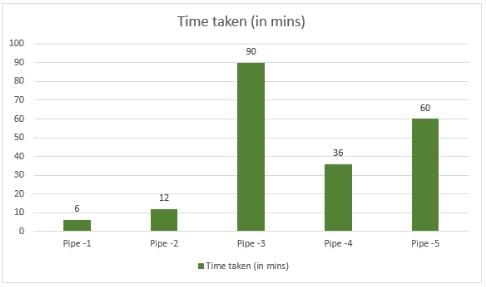

A Tank has three pipes; two of them are used to fil the tank while another one used to empty the tank namely: pipe 3, pipe 5 to fill the tank and a third pipe for making the tank empty. When all three pipes are open, 7/18th part of the tank is filled in 1 hours. How much time will the third pipe take to empty the completely filled tank 10 times the bigger than the previous one.
Directions: Rearrange the following six sentences (A), (B), (C), (D), (E) and (F) in the proper sequence to form a meaningful paragraph: then answer the questions given below them.
A). Indian Government remain concerned about potential spillover effects from the unconventional monetary policies of the advanced economies, which could cause disruptive volatility of exchange rates, asset prices and capital flows.
B). The challenges are related to high public debt and unemployment, poverty and inequality, lower investment and trade, negative real interest rates along with signs of prolonged low inflation in advanced economies.
C). In this context, emerging markets and developing countries (EMDCs) continue to be major drivers of global growth.
D). The global recovery continues, although growth remains fragile, with considerable divergences across countries and regions.
E). It is important to strengthen the framework of international financial cooperation, including through instruments such as swap-lines, to mitigate the negative impacts of monetary policy divergence in reserve currency issuing countries.
F). Structural reforms, domestic adjustment and promotion of innovation are important for sustainable growth and provide a strong and sustainable contribution to the world economy.
Which of the following will be the Second sentence?
In a school, 12th class consists of 30% male students of which 30% male students failed in the class. Total 82% students passed in 12th examination out of 900 students. Calculate the total number of female passed students?
Direction: In the following number series, only one number is wrong. Find out the wrong number.
17 25 34 98 121 339
There are 3 red balls and 5 green balls in a bag. If two balls are picked at random from the bag then find the probability of getting a red ball?
In the parallel-plate configuration shown, steady-flow of an incompressible Newtonian fluid is established by moving the top plate with a constant speed, U0 = 1m/s. If the force required on the top plate to support this motion is 0.75 N per unit area (in m2 ) of the plate then the viscosity of the fluid between the plates is __________ N-s/m2

The figure shows reducing area conduit carrying water. The pressure p and velocity V are uniform across sections 1 and The density of water is 1000 kg/m3 . If the total loss of head due to friction is just equal to the loss of potential head between the inlet and the outlet, then V2 in m/s will be _____
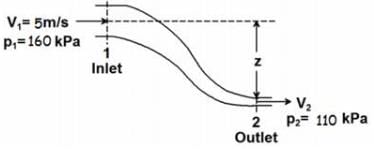
The stress-strain curve of an ideal elastic strain hardening material will be as
The strain hardening exponent ‘n’ of stainless steel relates to
N →column-1)
P) Zero
Q) between zero and one
R) One
Column-2
1) Plastic deformation
2) elastic solid
3) Perfect moldable solid
Mohr’s circle for the state of stress defined by  MPa. is a circle with radius of
MPa. is a circle with radius of
Water flows through a tube of diameter 25mm at an average velocity 1 m/sec. The properties of water ρ = 1000 kg/m3, μ = 6x 10-4 N-s/m2 , K= 0.625 W/mK, Pr= 4, Given Dittus – Boelter equation, Nu =0.023Re0.8 Prn and constant heat flux Nu = 3.66. What is Nusset number when fluid is cooling?
A machine tool company decides to make four sub-assemblies through three contractors differing in efficiency. Given below are the estimates of the time in hours) matrix. The minimum time in seconds is?

The average service rate at a Service Centre is 8 customer/hr, which varies exponentially. Customers arrive at random order with an average of 6 customer/hr. The probability of at least 3 customers in the system is____
In an Electrochemical machining process an iron( atomic weight=56 gm and valency=2) is used having cross section of 0.5x0.5 cm2. A current of 1000 A is passed through the electrolytic solution and the density of iron is given as 7.86gm/cm3. Find the feed rate of the electrode in cm/sec.
A mould has downsprue whose length is 15cm and cross-section area at the base of downsprue is 1.5 cm2. The downsprue feeds a horizontal runner leading into mould cavity of 1200 cm2. The time required to fill the mould cavity will be
Match the following:
a) Drop forging i-material is only upset
b) Machine forging ii-repeated hammer blows
c) Press forging iii-carried out manually
d) Upset forging iv-squeezing action
e) Smith forging v-metal gripped & pressure applied at heated end
The maximum reduction (upto 2 decimal points) in cross-sectional area per pass (R) of a cold wire drawing process is R = 1 - e -(n+1)
where n represents the strain hardening coefficient. For the case of a perfectly plastic material, R is
In spot welding of two stainless steel sheets, each of 5mm thickness, welding current 15000A is applied for 0.4sec, the heat dissipated to the base metal is 22000J . Assuming that the heat required for melting 2mm3 volume steel is 30J and contact resistance between sheets is 0.0004Ω. The volume (in mm3) of weld nugget is__________.
Which of the following is false about comparator :
Which types of stress strain relationship best describes the behaviour of brittle materials as ceramics and thermosetting plastics?
A paddle wheel is rotated inside a sealed container containing 20kg of air. If the applied torque on paddle wheel is 80Nm and is rotated at 120rpm for 3 minutes. The temperature rise of air is ________ ℃
According to second law of thermodynamics, the entropy change of the system for any process can be
The Mollier diagram of a pure substance is a
Match List-1 (Refrigerant) with List-2 (Uses) and select the correct answer using the code given below the List
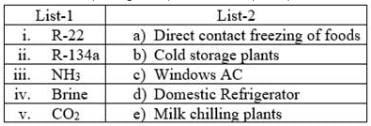






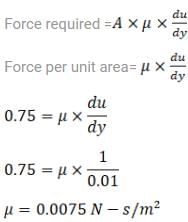
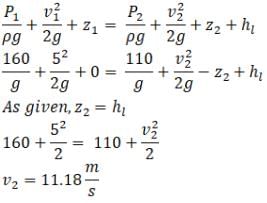








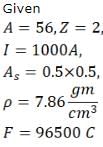
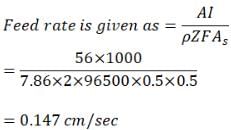




 is always a positive value and 0 for reversible process.
is always a positive value and 0 for reversible process. can be +ve or –ve depending upon heat addition and heat release respectively. So, the correct option is (d).
can be +ve or –ve depending upon heat addition and heat release respectively. So, the correct option is (d).











